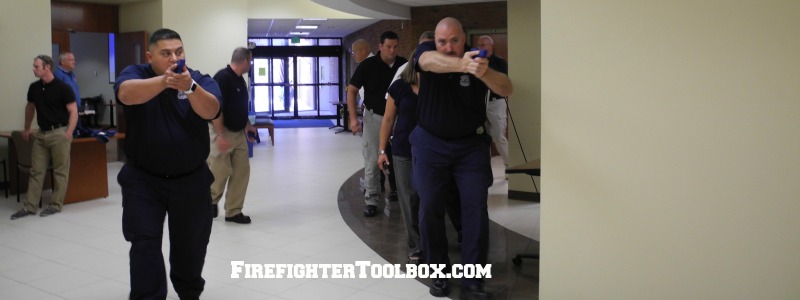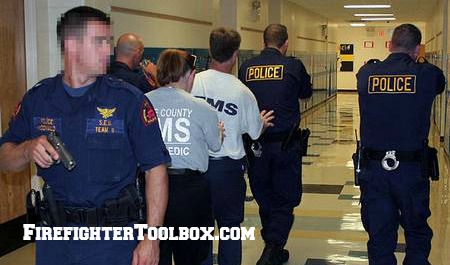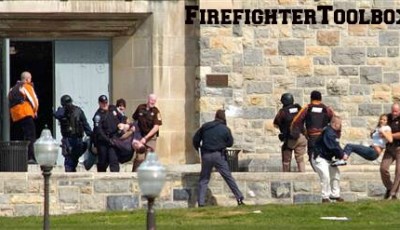Adapting Our Approach to Violent Events (Active Shooters) as Firefighters/EMS

Since 2011, the United States has seen a marked increase in the number of mass violent events (Active Shooter/Terrorism) (FBI, 2014). These increases have put a spotlight on the Public Safety communities’ response. Since the events of Columbine High School, Virginia Tech University, Sandy Hook Elementary School, Aurora Century Theater and the Boston Marathon Bombing, many lessons have been learned by Law Enforcement, Fire Service, and Emergency Medical Services personnel. These lessons have resulted in a forced shift in best practices in order to save lives, the patients and ours.
Since the Los Angeles International Airport shooting (Los Angeles World Airports, 2014), a committee of Emergency Physicians, Firefighters, Law Enforcement Officers and Paramedics have been working to address the needed change in our approach. The Committee on Tactical Emergency Casualty Care (C-TECC) has developed a fluid set of documents to guide responders in the best practices for saving savable lives in the critical first minutes of an event (https://www.c-tecc.org/). These sets of guidelines are a necessary tool to provide our profession with the guidance necessary to as safely as possible respond and react to active violent events and the consequences.

In order to understand the shift in the Fire Service approach to direct and/or indirect threat events, we must look at how we have responded until now. Most fire service and EMS response procedures have involved a respond to a “safe” staging area until an “all clear” message has been received from Law Enforcement. This has resulted in a fatal delay of life-saving care to wounded both civilian and responders. What has been learned from events and the C-TECC research is a new more aggressive training, planning and response approach must be undertaken if we are going to save lives.
The change that must occur first is we must as a Public Safety entity begin to plan, train and work in a UNIFIED manner with our Law Enforcement brothers. This process must include specific planning and training in 3 areas:
- Contact Team formation, movement, communications and actions (a Law Enforcement function)
- Rescue Team formation, movement, communication, and actions (a unified team of armed Security, TECC trained personnel)
- Evacuation Team formation, movement and actions (also a unified team)
Every member of every team needs TECC training as a minimum level. TECC medical training is not only for use during a mass violent event, it is an everyday benefit. Tactical Emergency Care teaches self and partner care for all responders. That means it saves us! Each responder must understand their role and responsibilities depending on which team they are assigned. The Contact Team’s sole job is to neutralize the active threat. The Rescue Team’s responsibility is with a security element attached move to the “Warm Zone” and begin lifesaving rapid assessment and treatment of the savable wounded. The Evacuation Team forms up last and moves on the instruction of the Rescue Team removing the most critically injured to a treatment area. This systematic approach can be utilized in all areas of the country.
Once the Fire Service, EMS Community, and Law Enforcement folks begin to train together, the positive things that will occur are endless. These events are not going away, all indications are they will continue to increase with frequency and consequences. Public Safety folks must begin to train and work together, lives depend on it. We must be properly prepared!!





